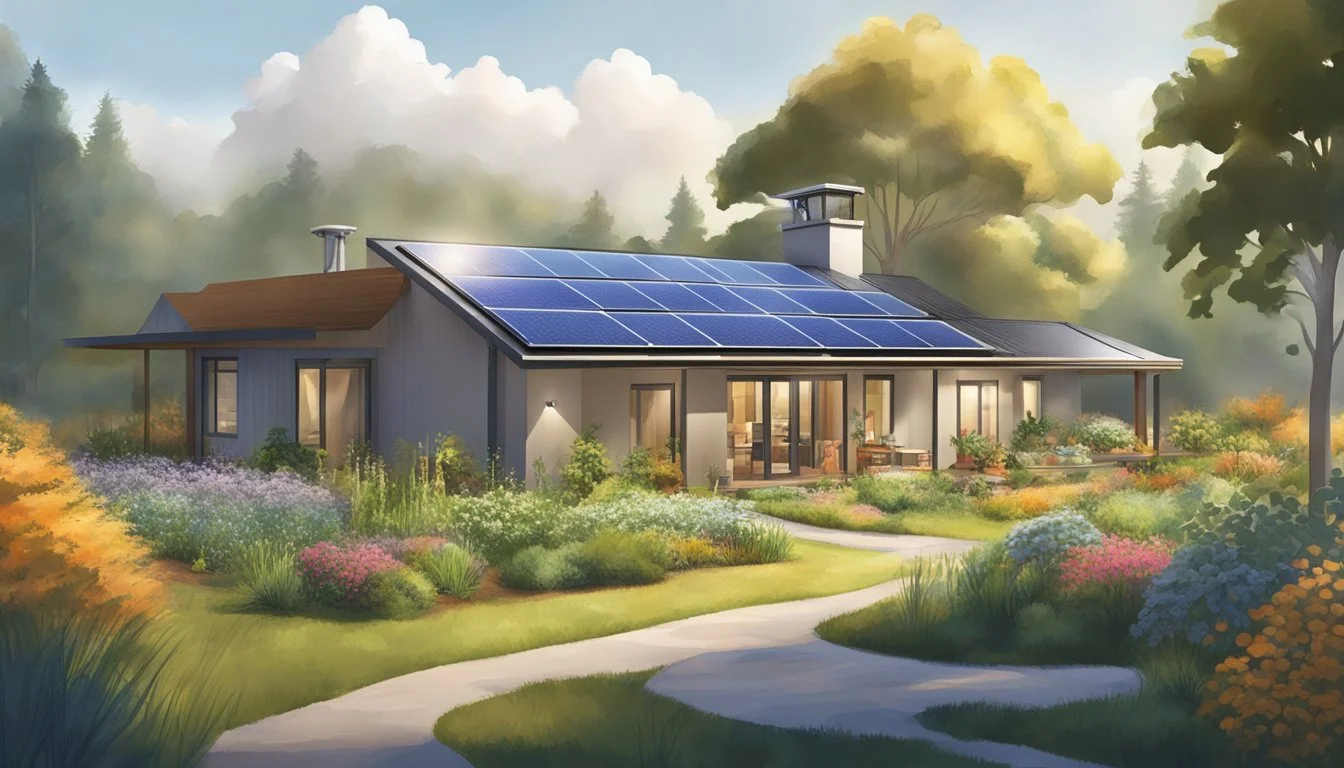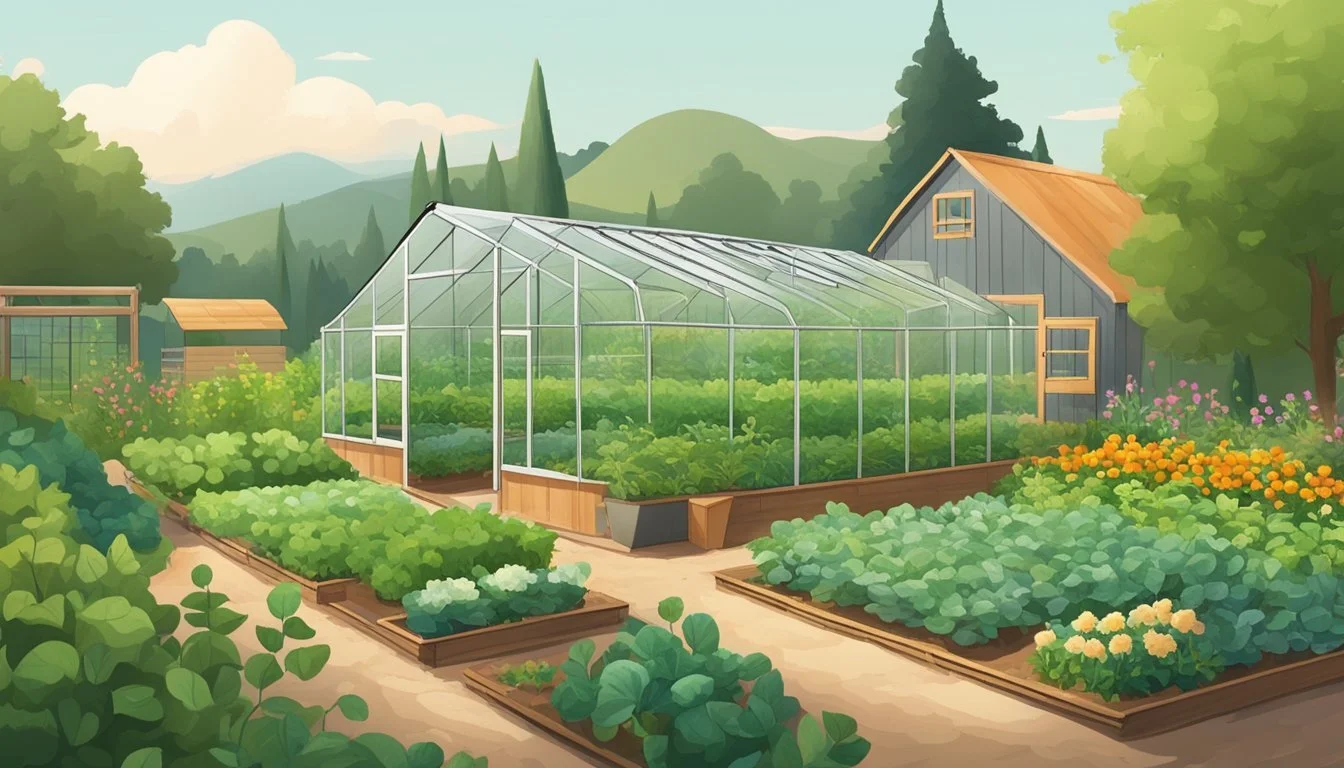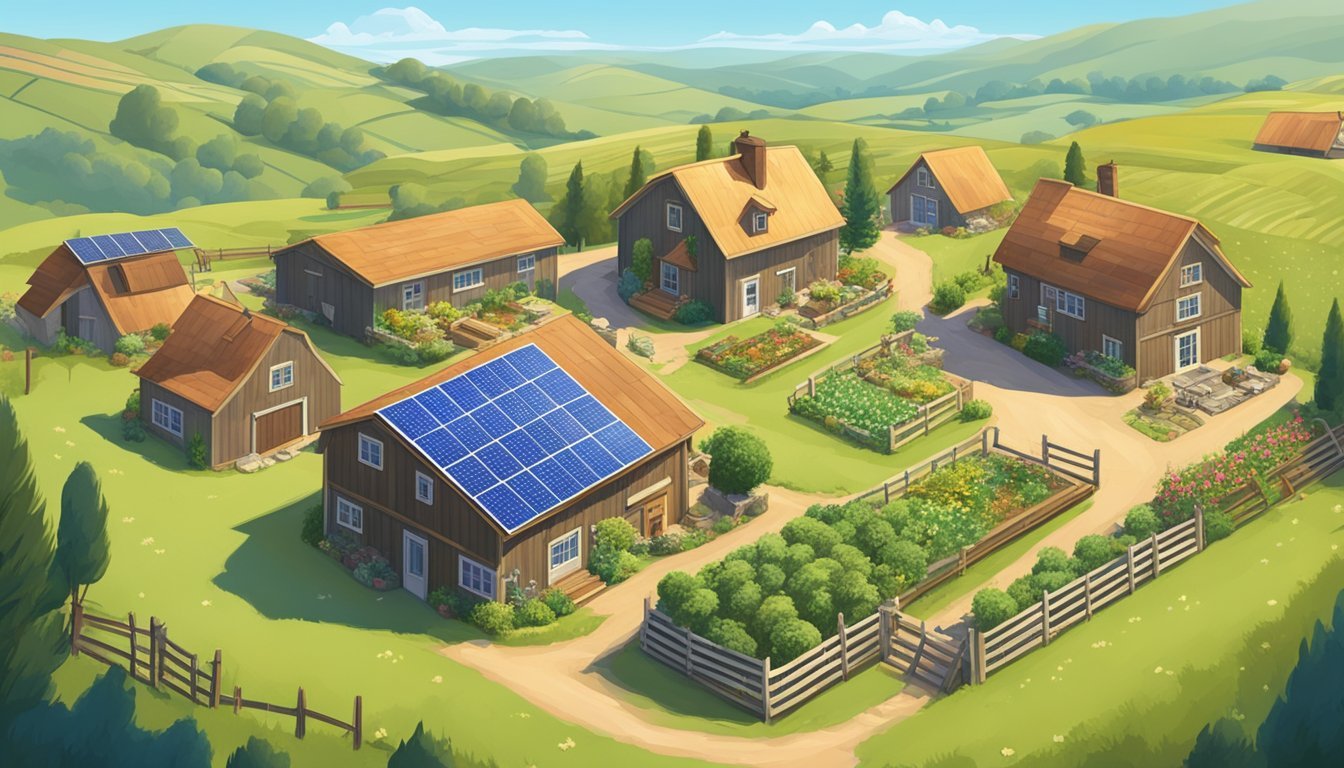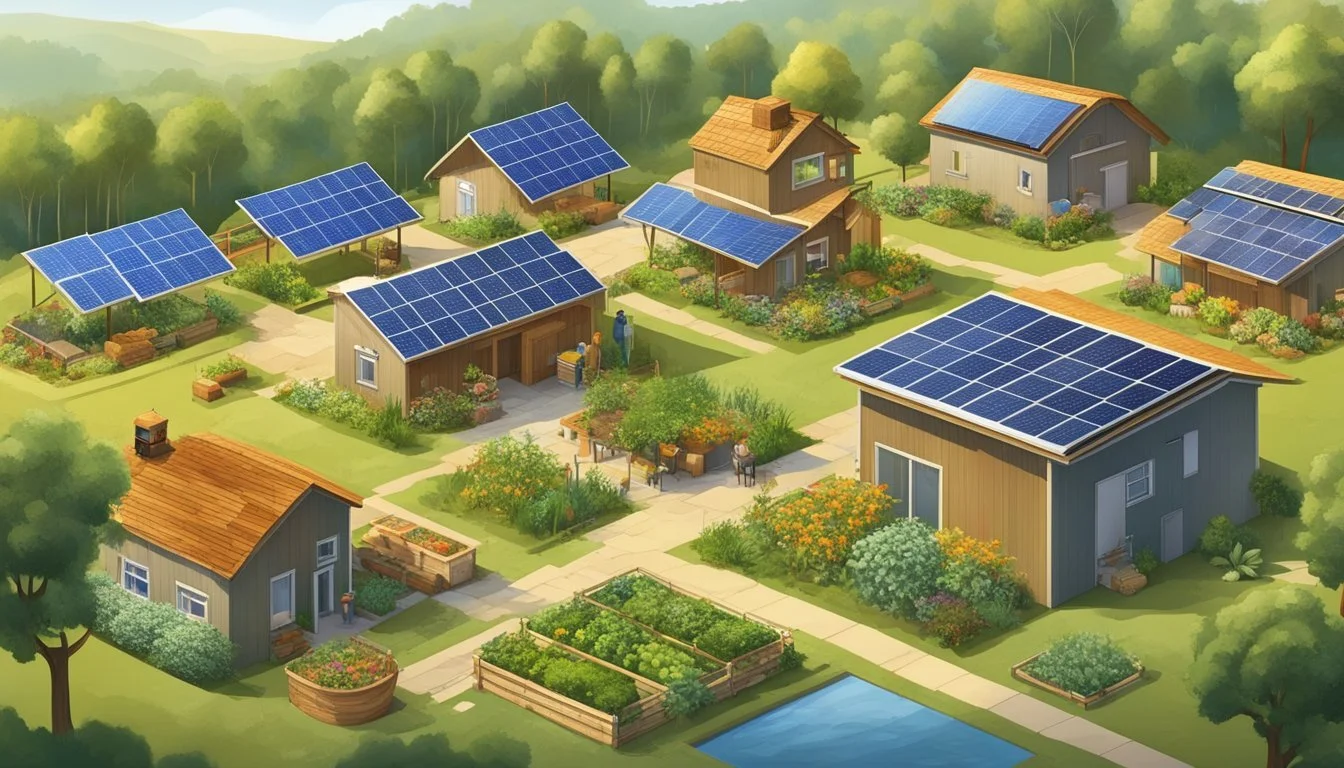The Future of Homesteading
Embracing Sustainability and Technological Advances
The concept of homesteading, characterized by a lifestyle of self-sufficiency and sustainability, has seen a resurgence in recent years. This renewed interest is driving innovations and practices that are shaping the future of homesteading. Today's homesteaders often integrate technology with traditional methods to create efficient and eco-friendly living spaces. They grow their own food, harness renewable energy, and minimize waste, embodying a commitment to the land that supports their way of life.
Homesteading trends reveal a growing emphasis on sustainability and environmental responsibility. Individuals and families are actively seeking ways to reduce their carbon footprints and live in harmony with nature. As awareness of global environmental challenges increases, so does the number of people looking to homesteading as a tangible solution to these issues. This lifestyle enables them to contribute positively to the environment while gaining a sense of accomplishment and independence.
Predictions for the future of homesteading suggest a continued blending of modern advancements with age-old farming and domestic skills. Communities may see a greater shift towards rural living as people pursue the peace and satisfaction found in homesteading. Accessibility to resources and shared knowledge through online platforms enables even those new to the concept to embrace the homesteading lifestyle, indicating that this way of life is becoming more attainable for a diverse group of people.
Historical Context and Evolution of Homesteading
The practice of homesteading has evolved significantly from its early legal origins to its modern conception as a lifestyle choice. Historical events, such as legislative acts and wars, have shaped its development, leading to the contemporary movements that embrace self-sufficiency.
Homesteading Origins
Homesteading began as a governmental incentive to populate and develop expanses of land. In the United States, the Homestead Act of 1862 was pivotal, granting 160 acres to settlers who could cultivate the land for five years. It aimed to encourage westward expansion and played a crucial role in shaping American history.
Impact of Wars
Wars have historically influenced homesteading, acting as catalysts for significant demographic and economic shifts. During and after conflicts, such as the Civil War and World Wars, there was a rise in homesteading as veterans returned, seeking peace and stability through land ownership. Furthermore, during these times, the promotion of self-sufficiency was often linked to national security and food production needs.
Modern Homesteading Movements
In recent decades, a resurgence in homesteading reflects a growing desire for sustainability and autonomy. The modern homesteading movement is characterized by a focus on eco-friendly practices, renewable energy, and local food systems. This trend gained momentum during the pandemic, highlighting the fragility of global supply chains and inspiring a shift toward self-reliant living.
Current Trends in Homesteading
The homesteading movement continues to evolve with new trends emerging as individuals seek greater sustainability and self-sufficiency. Millennials are at the forefront, adapting to urban spaces and utilizing modern technology, which together are altering the traditional homesteading landscape.
Urban Homesteading
Urban homesteading brings self-reliance to city environments, where individuals convert small spaces into productive areas. They focus on techniques such as container gardening, vertical farming, and the use of space-efficient designs to grow food. Urban homesteaders often integrate rainwater harvesting and composting to maximize their limited space's potential.
Millennial Homesteaders
Millennials are embracing homesteading to connect with nature and simplify their lives. They prioritize the cultivation of their own food and aim for a reduced carbon footprint. This generation is also influential in bringing a new aesthetic to the practice, often sharing their journey through social media. The millennial approach to homesteading is marked by a blend of traditional methods and modern ideals.
Technological Advancements in Homesteading
Homesteading today is supported by a range of technological advancements. The availability of sophisticated equipment has made tasks like irrigation, energy generation, and harvesting more efficient. Millennials in particular are leveraging technology to manage their homesteads more effectively, from solar panels for energy to online marketplaces for selling produce.
Homesteading's future seems intertwined with technological growth, offering novel ways to increase productivity and sustainability. It's clear that as technology advances, so will the methods and practices of homesteaders, urban and rural alike.
Sustainability and Environmental Responsibility
Sustainability and environmental responsibility in homesteading involve adopting practices that ensure the efficient use of resources while minimizing environmental impact. This approach is integral to maintaining ecological balance and building a resilient homestead.
Renewable Energy Implementation
Homesteaders are increasingly turning to renewable energy sources such as solar, wind, and hydro power. These systems can be tailored to the unique needs of a homestead, providing a reliable and environmentally friendly power supply. By installing solar panels or wind turbines, homesteaders can reduce reliance on fossil fuels and generate clean energy.
Recycling and Waste Reduction
Effective management of waste is crucial for sustaining the environment. Recycling materials, composting organic waste, and employing rainwater harvesting systems are key methods for waste reduction. These practices not only conserve resources but also reduce the ecological footprint of a homestead.
Sustainable Farming Practices
Implementing sustainable farming practices is another tenet of responsible homesteading. This includes:
Intercropping and crop rotation to improve soil health.
Utilizing natural pest control to reduce chemical use.
Practicing water conservation through efficient irrigation systems.
Sustainable practices in farming contribute to both the health of the ecosystem and the quality of the food produced.
Self-Sufficiency and Food Security
In light of the rising interest in homesteading, the concepts of self-sufficiency and food security are becoming increasingly significant. They are vital components in addressing how individuals and communities can sustain themselves with minimal external inputs.
Growing Your Own Food
Gardening and farming are at the heart of a self-sufficient lifestyle. By growing their own fruits, vegetables, and grains, individuals have direct control over a portion of their food supply. This process not only enhances food security but also ensures that families have access to fresh and nutritious produce. Educational resources and community support networks are essential to empower more people to start their own gardens and small-scale farms.
Types of Crops: Common choices for home gardens include tomatoes, leafy greens, carrots, and berries.
Gardening Methods: Raised beds, vertical gardens, and container gardening are suitable for various space constraints.
Nutritional Self-Reliance
Nutritional self-reliance emphasises the importance of a diet that satisfies all necessary dietary requirements without external aid. It involves understanding the nutritional values of foods and emphasizing the cultivation of crops that meet these needs. For instance, legumes are an excellent nutritional choice because they provide protein, a macronutrient often harder to obtain in a self-sufficient food system.
Key Nutrients: Protein, vitamins, minerals, fats, carbohydrates.
Food Planning: Balance is vital; planning meals around seasonal availability and preserving excess produce.
Building a Self-Sufficient Food System
Creating a self-sufficient food system extends beyond individual efforts to include community-wide participation. This involves collaborative initiatives like food co-ops, seed sharing libraries, and education on sustainable farming practices. Reducing dependence on commercial food chains strengthens local economies and can create resilience against global market fluctuations.
Components: Local production, distribution, consumption, and waste management.
Advantages: Sustainability, economic and environmental benefits, community-building.
Community and Social Aspects of Homesteading
The move towards homesteading is often coupled with an emphasis on community engagement and social enrichment. As individuals navigate the homesteading lifestyle, they routinely contribute to and draw from a pool of collective knowledge, often leading to the formation of tight-knit communities bound by shared experiences and advice.
Community-Supported Agriculture
Community-Supported Agriculture (CSA) has become a pivotal model for homesteaders seeking to bridge the gap between grower and consumer. This system allows for direct support of local farmers through subscription-like services where individuals receive regular shares of the harvest. Not only does this promote sustainable agriculture practices, but it also fosters economic stability for homesteaders and organic growth of community networks.
Sharing Knowledge and Experience
Sharing knowledge is the cornerstone of any thriving homesteading community. Established homesteaders offer advice on everything from crop rotation to renewable energy sources. Newcomers often attend workshops, utilize online forums, and participate in local events to gain insights. Such exchange of expertise is invaluable, equipping members with the know-how to effectively manage their homesteads while nurturing a collective wisdom.
Workshops: Skill-building sessions ranging from canning to carpentry
Online Forums: Digital platforms for problem-solving and inspiration
Local Events: Gatherings to celebrate harvests and share homemade goods
Creating Community Bonds
The social component of homesteading extends beyond agriculture into the creation of community bonds. These relationships are cemented through shared labor, exchange of goods, and a common desire for a more self-sufficient lifestyle. Homesteaders frequently rely on each other for both physical and emotional support, which reinforces the community fabric and cements the homesteading lifestyle as a socially interconnected endeavor.
Shared Labor: Barn raisings, cooperative gardening, and group harvesting events
Exchange of Goods: Barter systems for produce, tools, and handmade items
Emotional Support: Providing a network of care during challenging times
Challenges and Considerations
As the trend of homesteading continues to gain momentum, aspiring homesteaders face a variety of hurdles. Understanding these obstacles is crucial for anyone looking to embark on a self-sufficient lifestyle.
Legal and Zoning Challenges
Homesteaders often encounter legal and zoning regulations that can restrict various activities essential to running a homestead. For example, some areas have stringent laws regarding land use, which can limit the ability to grow crops or raise livestock. Additionally, building codes may present challenges for those wanting to construct unconventional dwellings or renewable energy installations. Awareness of local ordinances is essential to navigate these legal complexities.
Building Code Regulations: Compliance with local standards can be mandatory.
Land Use Restrictions: Limits on agricultural practices can affect homesteading plans.
Economic Aspects
The economic considerations of homesteading are significant and multifaceted. Starting a homestead requires initial capital, often for land purchase, setup of infrastructure, and acquisition of tools and animals. The ongoing cost of maintaining a homestead should not be underestimated, as it includes property taxes, seeds, feed, equipment maintenance, and potentially, the hiring of additional labor.
Upfront Costs: High investment for land and infrastructure.
Maintenance Expenses: Continuous investment in tools, livestock, and crop production.
Climate Change and Homesteading
The impact of climate change poses both challenges and opportunities for homesteaders. They must adapt to fluctuating weather patterns, which can affect crop yields and water availability. On the positive side, many homesteaders are at the forefront of sustainable living practices, which can mitigate climate-related issues. Resilience in the face of a changing climate is crucial, as is an understanding of region-specific environmental conditions.
Weather Patterns: Adapting to unexpected or extreme conditions.
Resilience: Fostering sustainability to combat and adapt to climate change effects.
Living Off the Land
Living off the land is a trend that turns back the clock on our modern lifestyle, emphasizing sustainability and autonomy. It's about forging a direct and meaningful connection with nature, becoming self-reliant for food through practices like raising livestock and cultivating gardens and orchards.
Connection to Nature
Individuals engaged in living off the land often speak of a profound bond with the environment that is fostered through daily interactions. This lifestyle encourages one to observe natural patterns and respond to the rhythms of the seasons, which are crucial for successful sowing and harvesting.
Raising Livestock
A key aspect of this lifestyle includes the rearing of chickens and other livestock for eggs, milk, and meat. These animals provide not just sustenance but also other benefits like natural fertilization for gardens through their waste. Key considerations involve ensuring adequate space, shelter, and a diet that might include scraps from the garden to keep the cycle of sustainability going.
Cultivating Gardens and Orchards
The cornerstone of living off the land is often the garden, where a variety of vegetables are grown year-round, depending on the climate. Fruit trees are another vital component, providing a long-term investment in food production. Both require knowledge of local soil conditions, plant varieties, and organic pest control methods, as the use of chemicals is commonly avoided to keep the produce as natural as possible.
Innovative Homesteading Techniques
In the realm of sustainable living, homesteading practices are continually evolving to incorporate innovative techniques that enhance efficiency and productivity. These approaches emphasize the optimization of space, resources, and energy to create holistic and resilient food systems.
Permaculture and Agroforestry
Permaculture is a design system that mimics natural ecosystems to create sustainable and self-sufficient agricultural environments. It integrates land, resources, people, and the environment through mutually beneficial synergies, emphasizing the use of perennial crops, multi-layered canopy structures, and soil health. Agroforestry, a key element within permaculture, combines agriculture and forestry to create more diverse, productive, and sustainable land-use systems. These often include a mix of trees, shrubs, and crops, leading to improved soil structure and fertility.
Hydroponics and Aquaponics
Hydroponics is the practice of growing plants without soil, using mineral nutrient solutions in an aqueous solvent. This technique allows for precise control of nutrients and environmental conditions, leading to higher yields and faster growth rates. Aquaponics combines hydroponics with aquaculture by raising fish and plants together in a closed system. The waste produced by the fish provides organic food for the plants, and the plants naturally filter and clean the water, which is then recirculated back to the fish tanks.
Raised Bed and Vertical Gardening
Raised bed gardening involves growing plants in soil that is elevated above the ground, often enclosed by frames made of wood, rock, or concrete. This method improves drainage, reduces soil compaction, and can extend the growing season due to the soil's increased warmth. Additionally, raised beds can be designed to be more accessible for those with physical restrictions. Vertical gardening utilizes vertical space for growing plants, which is particularly beneficial in urban areas where horizontal space may be limited. It includes techniques such as trellises, green walls, and tower gardens, and is suitable for a variety of plants, including vegetables, herbs, and ornamentals.
The Role of Renewable Energy in Homesteading
Renewable energy sources are essential for modern homesteaders seeking sustainability and independence from non-renewable resources. Incorporating solar panels, wind turbines, and energy-efficient technologies allows for a self-reliant lifestyle.
Solar Energy Utilization
Homesteaders increasingly turn to solar energy as a reliable source of electricity. Solar panels are installed to capture sunlight, converting it into electrical power for daily use. This energy powers everything from household appliances to lighting systems. Systems can range from small setups for basic needs to larger arrays capable of sustaining a family's entire energy consumption.
Wind and Water Power
Alongside solar energy, wind and microhydro power represent viable renewable energy solutions for homesteads. Small-scale wind turbines generate electricity in areas with consistent wind patterns. Microhydro systems harness energy from flowing water sources, offering continuous power in suitable geographic locations. Both systems can serve as standalone power sources or complement solar installations.
Energy Conservation Methods
A crucial aspect of renewable energy use in homesteading is energy conservation. Homesteaders employ a variety of strategies to reduce energy consumption:
Insulation: Enhanced home insulation to minimize heating and cooling requirements.
LED Lighting: Use of energy-efficient LED lighting to lower electricity demand.
Energy-Efficient Appliances: Adoption of appliances designed to operate on minimal energy without compromising performance.
Energy Monitoring: Implementation of energy monitoring systems to track consumption and identify areas for improvement.
Homesteading as a Fulfilling Lifestyle
Homesteading offers individuals a unique blend of fulfillment and self-sufficiency, derived from intentional living and connecting with the land.
Finding Inspiration and Meaning
One discovers a rich vein of inspiration by turning to homesteading. Engaging directly with nature, they ground their lifestyle in the rhythms of the earth, finding profound satisfaction in the cultivation of their food and care for the land. This lifestyle has seen a particular resonance among Millennials, who often seek more meaningful and grounded ways of living.
The Rewards of Hard Work
The daily rituals and challenges of homesteading instill a strong sense of accomplishment. Physical tasks that demand attention and effort, such as tending to crops and maintaining the property, translate into tangible results – a table laden with fresh produce or a well-kept barn. It's not just the produce that flourishes, but the individuals themselves, thriving on the routine and the satisfaction of hard work.
Building Resilience and Independence
Homesteading cultivates resilience as individuals learn to navigate and adapt to the variables of land stewardship. With each challenge, they bolster their ability to sustain themselves, reinforcing a life of independence. By harnessing skills like food preservation, animal husbandry, and resource management, they lay the foundation for a self-sufficient life, protecting their autonomy and ensuring stability amidst external uncertainties.
Preparing for the Future
In considering the evolution of homesteading, individuals are focusing on emerging trends, integrating new technologies, and adopting practices that ensure sustainability and self-sufficiency for the years to come.
Forecasting Homesteading Developments
Homesteading is witnessing a substantial shift towards sustainability. Projections indicate an uptick in approaches that prioritize green living. This is evident in the growing interest in renewable energy options and organic gardening. They are anticipating a rise in participation within community-supported agriculture (CSA) which enhances both food security and local economies.
Adapting to Technological Changes
Homesteaders are embracing technology to streamline their efforts, ensure efficiency, and maintain a self-sufficient lifestyle. Advances such as automated irrigation systems, precision farming tools, and smart greenhouses are becoming more prevalent. These technologies facilitate increased control over food production and help optimize resource use, leading to more productive and sustainable homesteads.
Future-Proofing Homesteading Practices
To safeguard their way of life, homesteaders are implementing resilient practices that withstand economic and environmental fluctuations. They are investing in heirloom seed varieties, durable tools, and comprehensive education on permaculture principles. Measures such as water-harvesting systems and edible landscaping are prime examples of strategies that fortify homesteading against future uncertainties.










